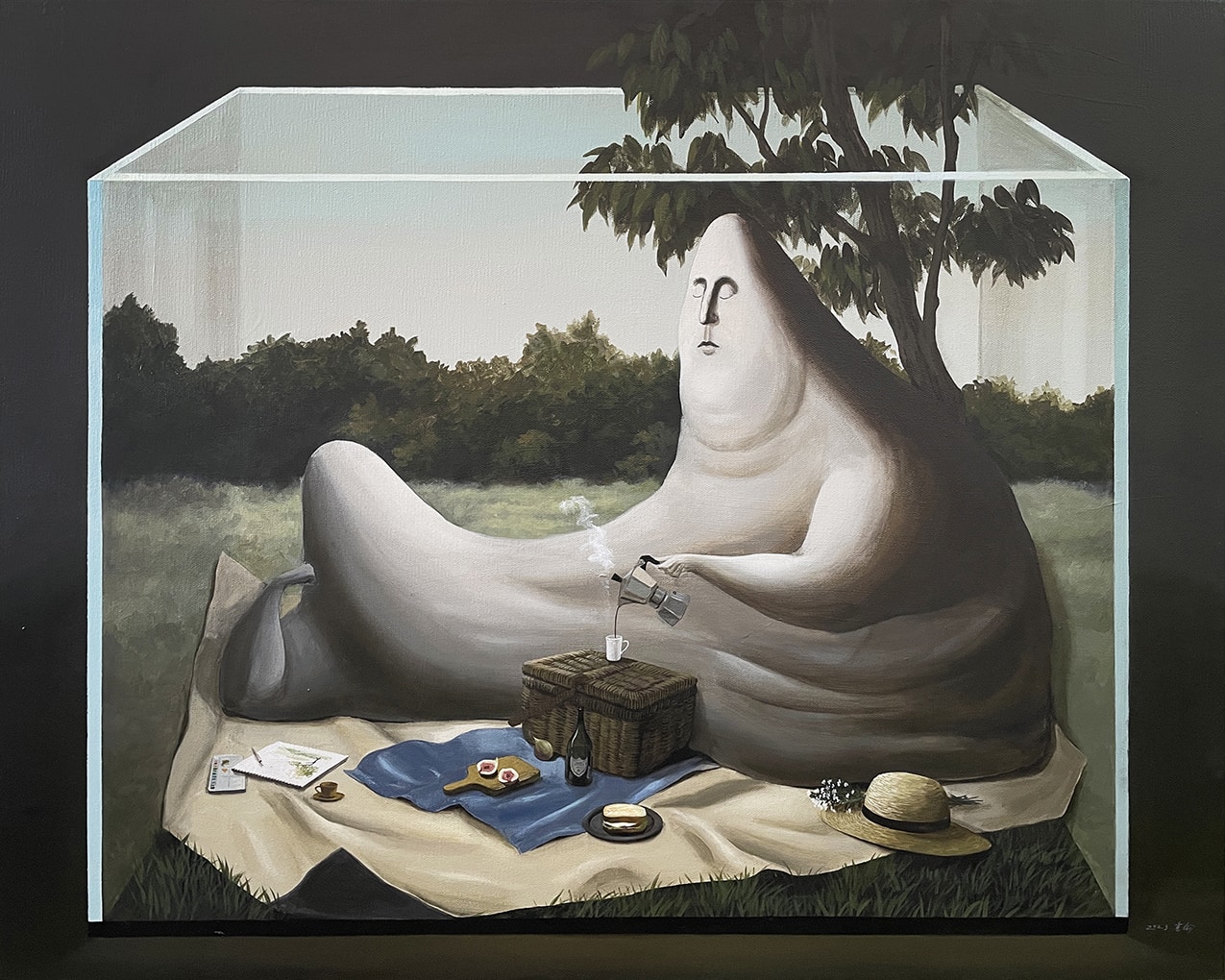Finding Harmony in Expression
By Liu Xingyou
In recent years, the prevalence of archival and intellectualized works has become a staple in contemporary art. However, a particular type of viewing experience has become rare. What kind of experience, you ask? It’s the sensation of being instantly captivated by a painting before knowing anything about the artist’s biography, academic background, or accolades. This experience is solely between the viewer and the artwork, with the artist’s presence almost absent. Only after this initial captivation does the opportunity arise to articulate the experience in words, sharing it with others. Today, such encounters with paintings are rare gems.
The Prelude to an Encounter
Angels? Demons? Spirits? Phantoms? Beasts? Numerous tarot-like, fantasy, or gothic figures populate Zhu Manzhen’s works. Her strokes outline unstable yet clear forms, always hinting at hidden events that captivate and mystify. Floating, embracing, giving, intertwining, rituals… What exactly is happening in these paintings? Similar suspense and fantasy are found in the works of Guo Shuyu and Dai Lingyu. The protagonists in Guo Shuyu’s pieces are large humanoid masses, metaphors and projections for all things, existing in predefined spaces in solitude. Even when two masses are present, there’s a palpable sense of isolation. Why this solitude? How does one experience it? In contrast, the humanoid figures in Dai Lingyu’s works appear in varying contexts, sometimes clear, sometimes so blurred they’re hard to discern. Often, objects blend with strokes and pigments, emerging between background and paint layers. Returning to the exhibition itself, named after Sanmao’s article “Life is More Romantic Than Dreams,” is there a connection between the artist’s brush and the writer’s pen?
For Taiwan, settling down contrasts with traveling, academic pressures contrast with the myriad facets of life. In “Life is More Romantic Than Dreams,” these contrasts manifest as daily necessities juxtaposed with romantic dreams, through a correspondence between Sanmao and a sixteen-year-old reader. Despite being “lost in the tired eyes of scholars,” Sanmao encouraged others to chase their dreams while recognizing the necessary toil and tears of life. For this exhibition’s three participants, whether through free-flowing strokes or meticulously crafted scenes, what stories do their creations tell? Or is it more than just conveying meaning?
Reality and Idealism
Throughout the long river of art history, Romanticism and Symbolism might provide a vantage point to understand this exhibition. Emerging in the late 18th to early 19th centuries, Romanticism was not a specific style but a movement that embraced various subjects beyond mere emotional expression, igniting a wave of artistic freedom. Interestingly, in the late 19th century, Symbolism’s idea that “color itself has direct expressiveness” closely linked with Romanticism. Whether in Charles Baudelaire’s salon critiques, suggesting artists respond to contemporary life’s shifts, or in Jean Moréas’s “Symbolist Manifesto,” advocating for “sensory forms to clothe ideas,” both movements connected seamlessly. In contemporary art, intimate fantasies and personal reflections echo these movements. Today, this lineage is visible in the works of Zhu Manzhen, Guo Shuyu, and Dai Lingyu, where life and dreams sway between reality and ideals.
Fantasy, Allegory, and Imagery
Each of Zhu Manzhen’s paintings lacks a definite story but embodies a “tangled” creative state, involving not just the paint on wood but also the serene or tumultuous life on a tropical island. In “Strange Frequency,” what does the white-horned dragon say to the black bunny? The dark demon draped in gray-white cloth tugs at its hem in “Seasonal Change,” while the weather whimsically plays tricks. These elements distill Zhu’s experiences from movies, literature, and even concerts into allegorical forms. The tangled forms blur the lines between good and evil, right and wrong, making all roles fluid. If life is more romantic than dreams, Zhu’s fantasy is more lifelike than dreams.
The dough-like humanoid figures in Guo Shuyu’s works are central yet almost non-existent. These symbolic projections ferment in her “mini-theaters” on canvas, often portraying modern life’s helplessness and wry humor. Playful toys like the stacking blocks in “I Can Do It,” puzzles in “Possibility of Crossing the Line,” and tangrams in “Possibility of Crossing the Line,” alongside moments like birthday candles, decorating Christmas trees, or lazy mornings, blend self-mockery with encouragement. These works clarify abstract interpersonal relationships and self-reflection, making them shareable. If life is more romantic than dreams, Guo’s allegory is both life and dream.
Dai Lingyu’s works are more expressive and abstract. In the “Mime” and “Relations” series, expressive brushstrokes and linear marks like smears and scratches capture unspoken emotions between figures. Pieces like “Waiting,” “Night Adventure,” “Daydream,” and “3:00 AM” serve as commas in continuous daily life, recording these phases in painting. These daily fragments, familiar yet hard to describe, resemble the essence of insomnia, waiting, silence, contemplation, and zoning out. These fragments form the warp and weft of “normal” life. Most people rush to unfold the silk surface, forgetting the intricate weft. The slight differences in repetitive actions hint at connections to the next work. If life is more romantic than dreams, Dai’s imagery expresses a life dreaming of romance.
The Reason for Gaze
At times, we are our own awakeners. In a moment, everything is clear, the world is full of affection. But sometimes, due to human flaws, we choose self-isolation, becoming indifferent. If life is more romantic than dreams, it’s because artists, though flesh and blood, are extraordinary. Through their creations, they express their essence, letting their expression find its place. Viewers need only gaze at the artwork to reflect on their contemporary context. Isn’t life more romantic than dreams?
- All
- 郭書瑜
- 朱曼禎
- 戴伶育
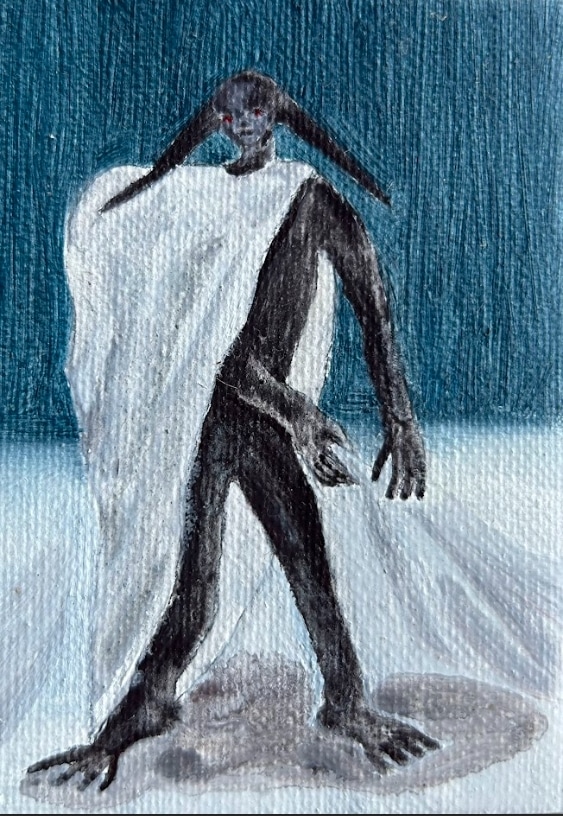
朱曼禎_換季_棉畫布、油彩_10x7cm_2023
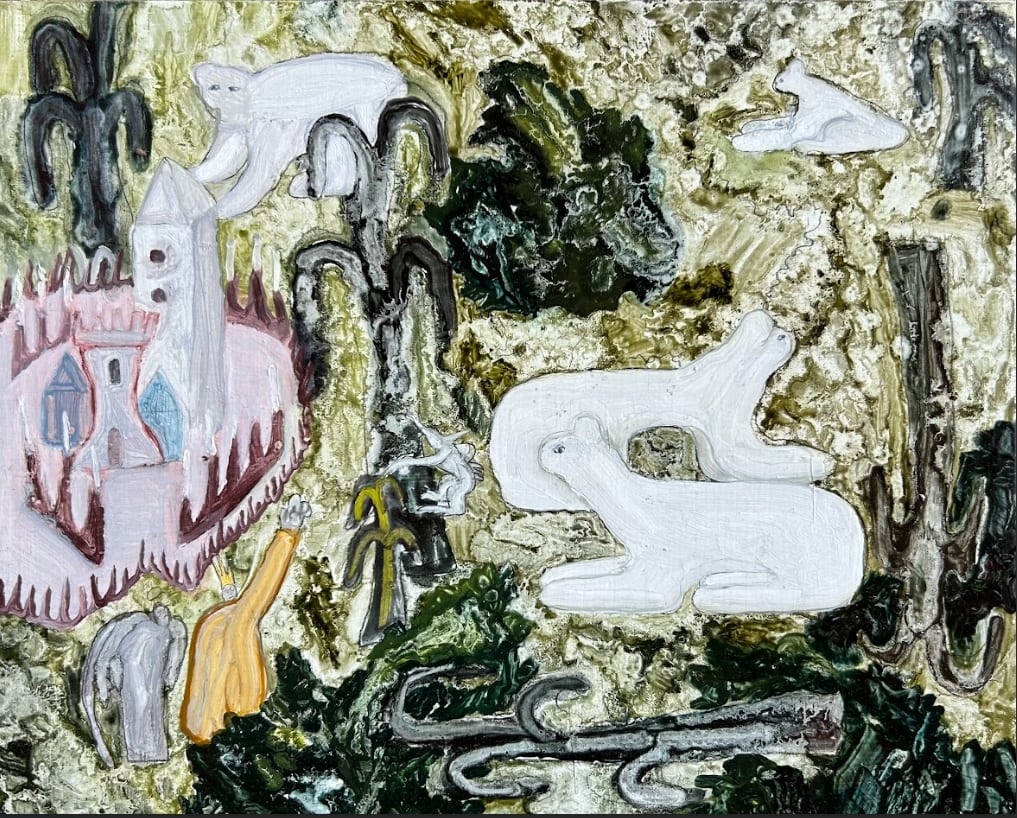
朱曼禎_圍_木板、油彩_22x27cm_2023
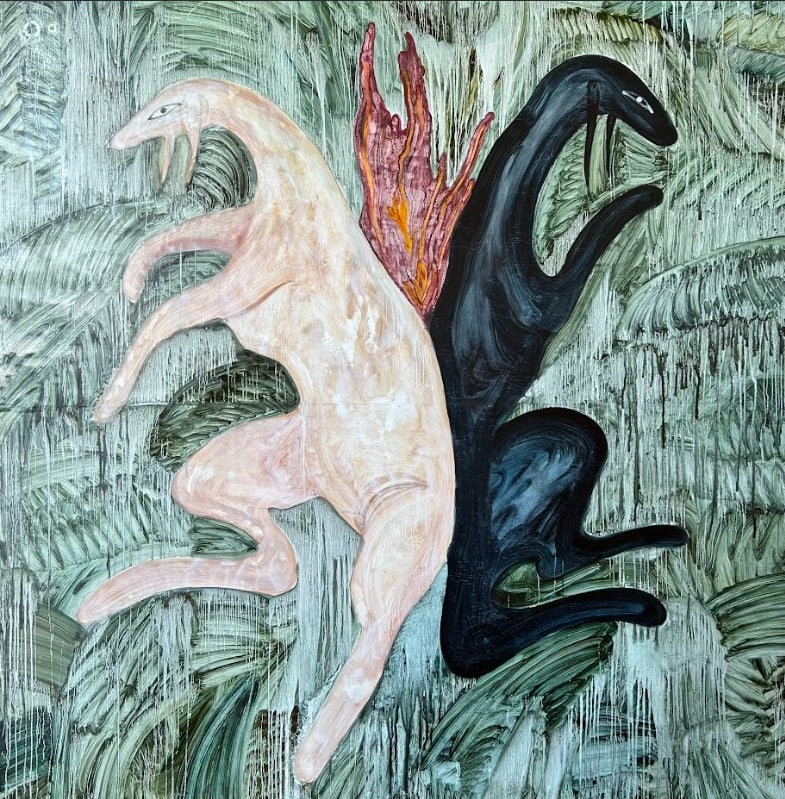
朱曼禎_雙犬_木板、油彩_180x180cm_2023
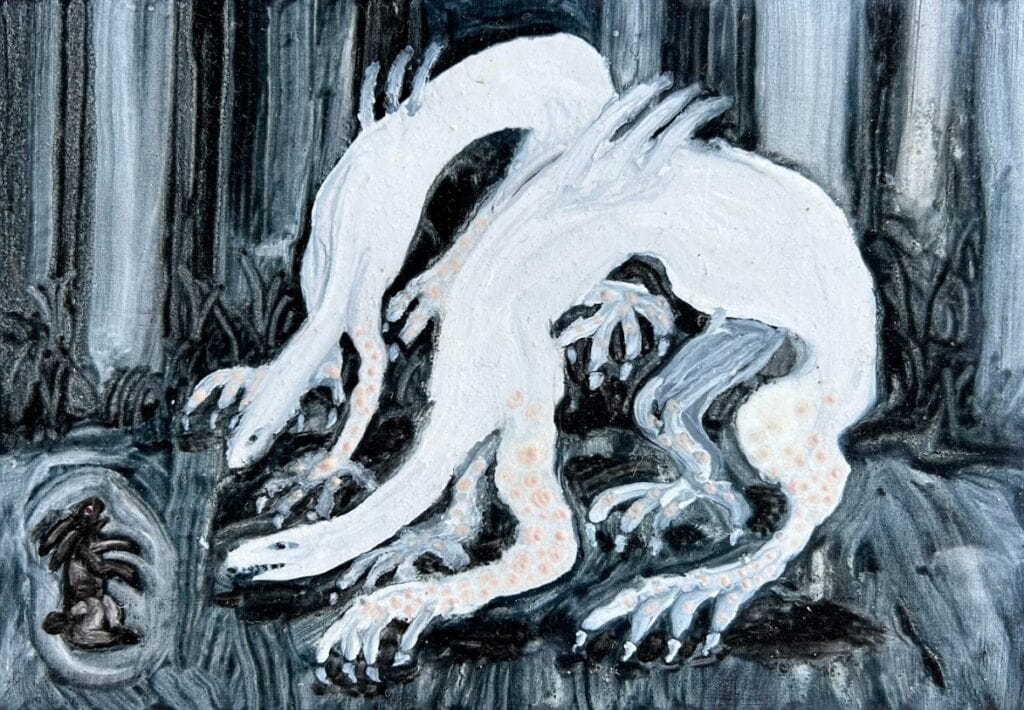
朱曼禎_怪異的音頻_木板、油彩_16x23cm_2023
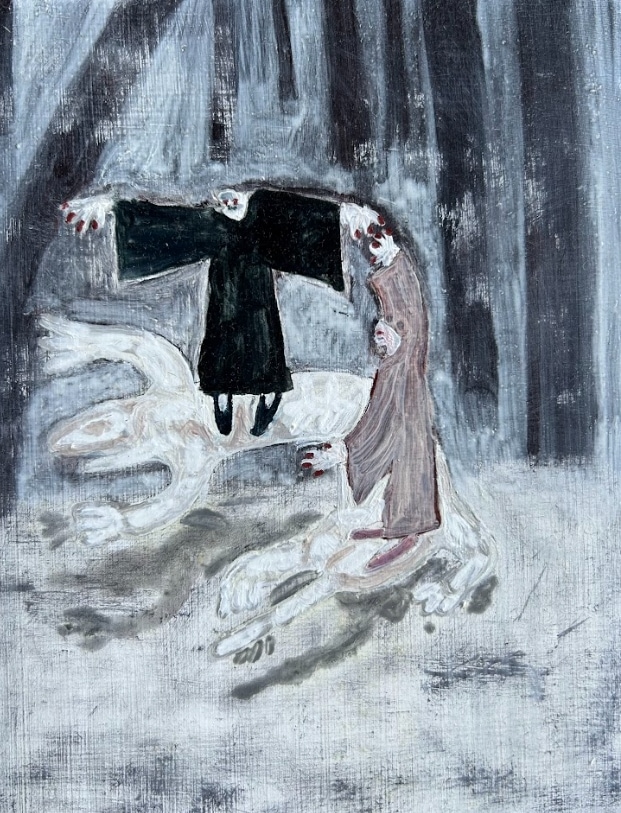
朱曼禎_毯的骨架_木板、油彩_18x14cm_2023
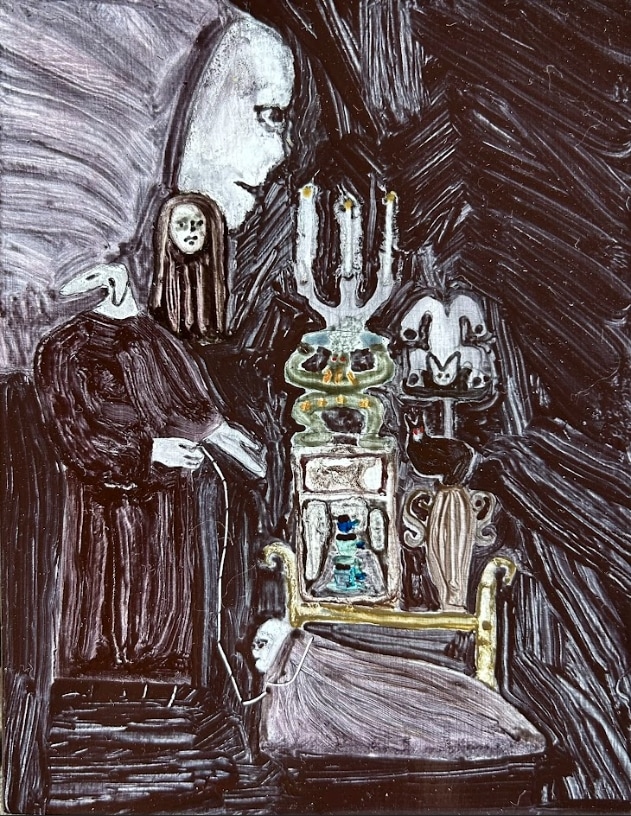
朱曼禎_流浪商人_木板、油彩_18x14cm_2023
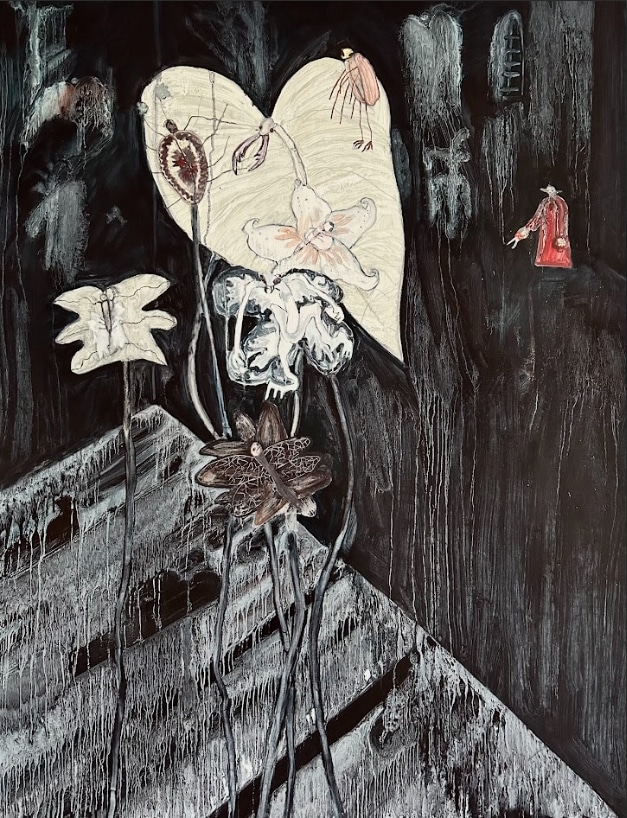
朱曼禎_園丁_木板、油彩_117x91cm_2023
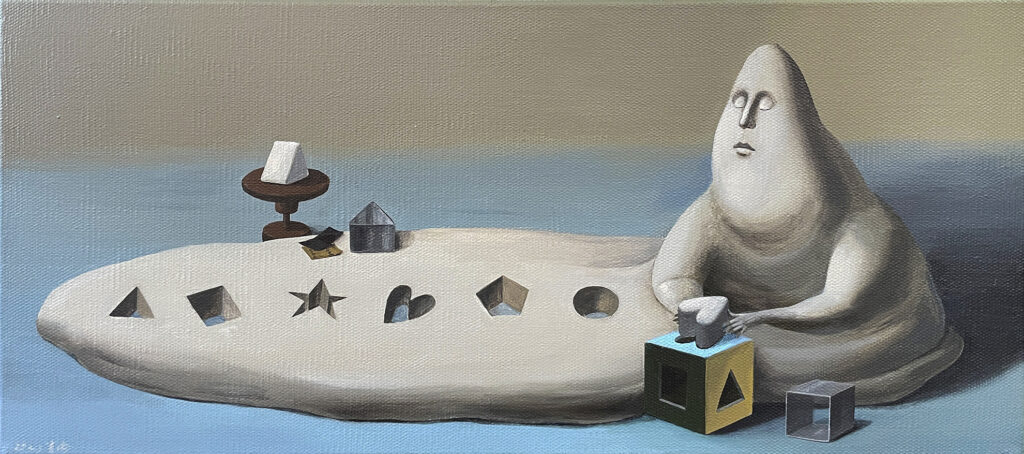
郭書瑜_將將好_壓克力、畫布_23x51cm_2023
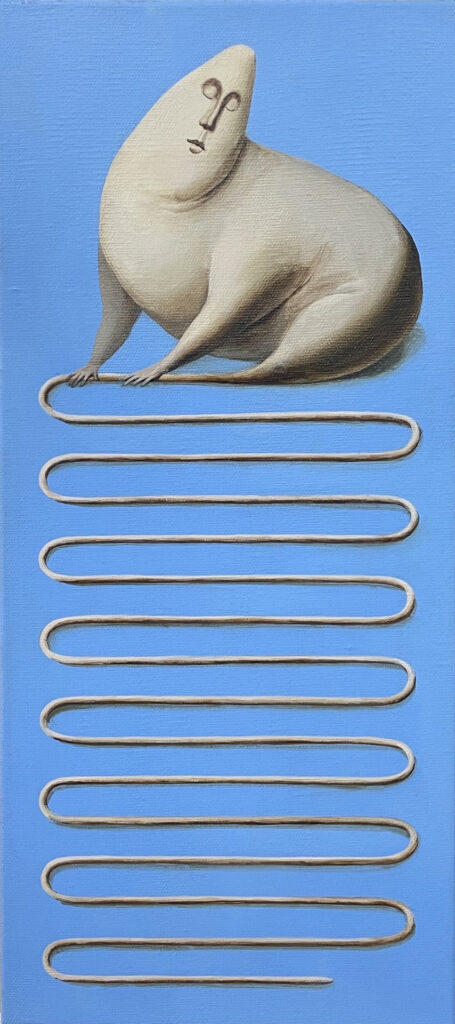
郭書瑜_準備_壓克力、畫布_51x23cm_2023
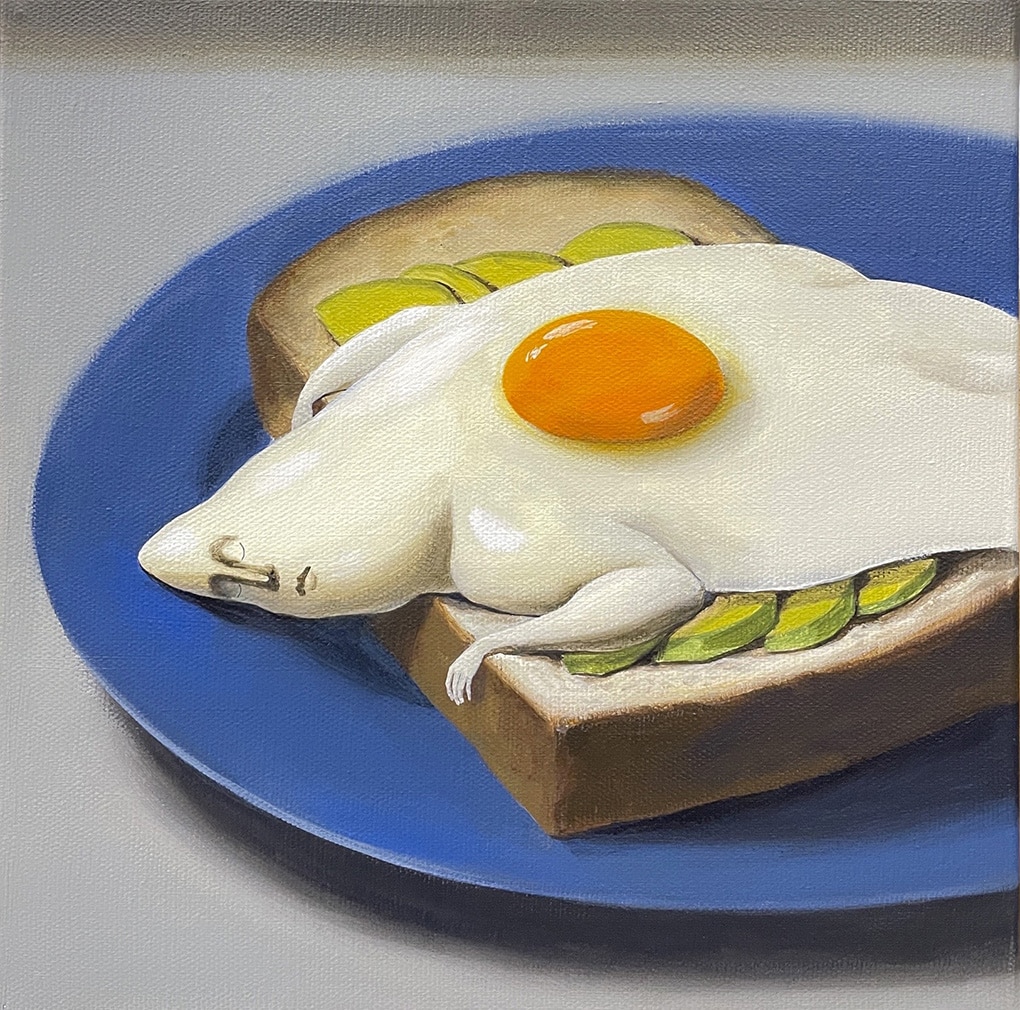
郭書瑜_理想生活潛入計畫─營養又美味_壓克力、畫布_30x30cm_2023jpg
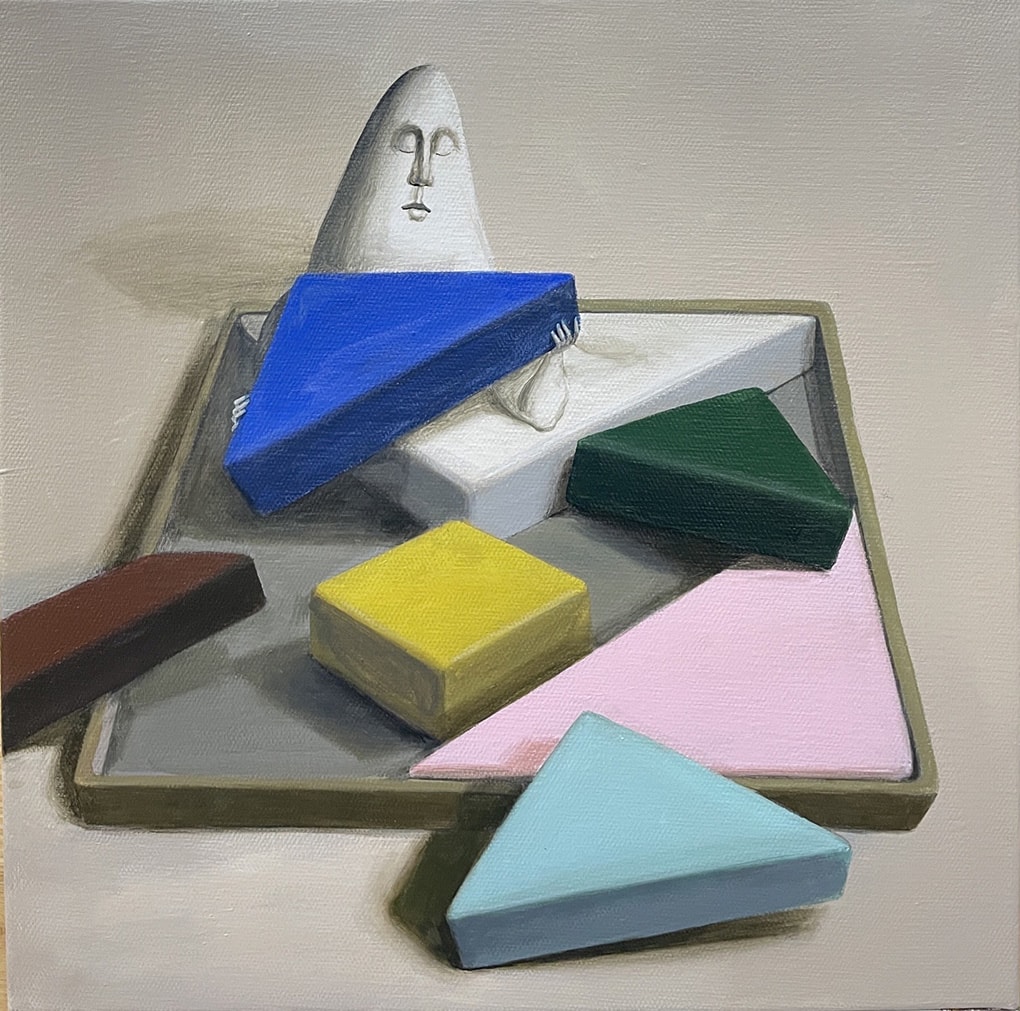
郭書瑜_越界的可能_壓克力、畫布_35x35cm_2023
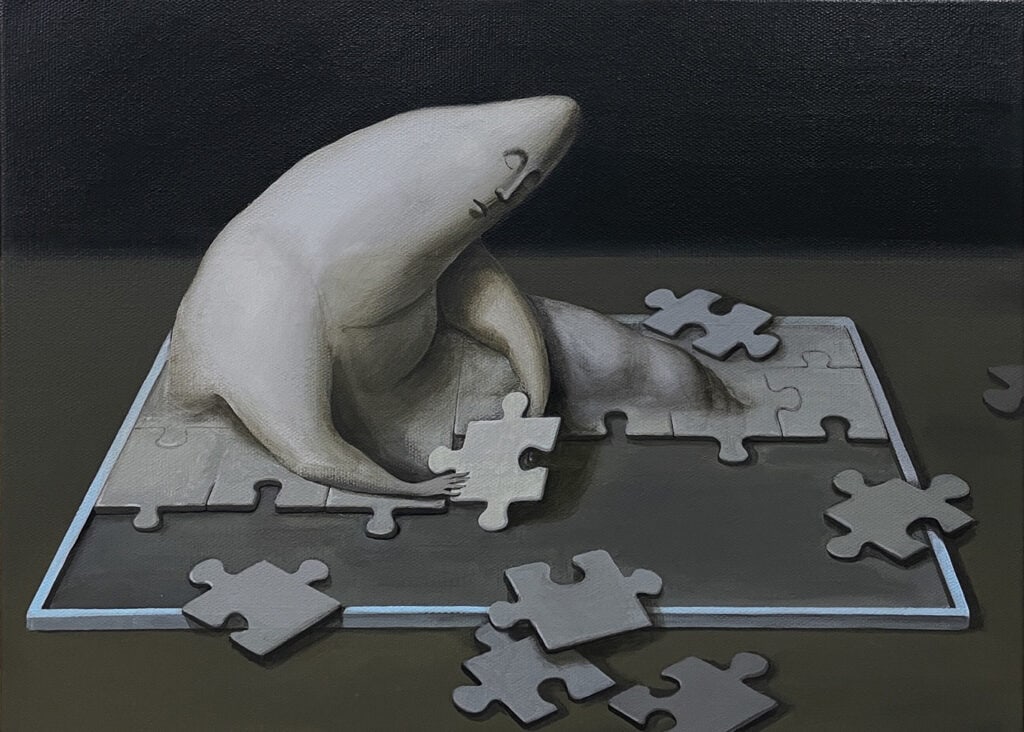
郭書瑜_一步一步_壓克力、畫布_33x45.5cm_2023
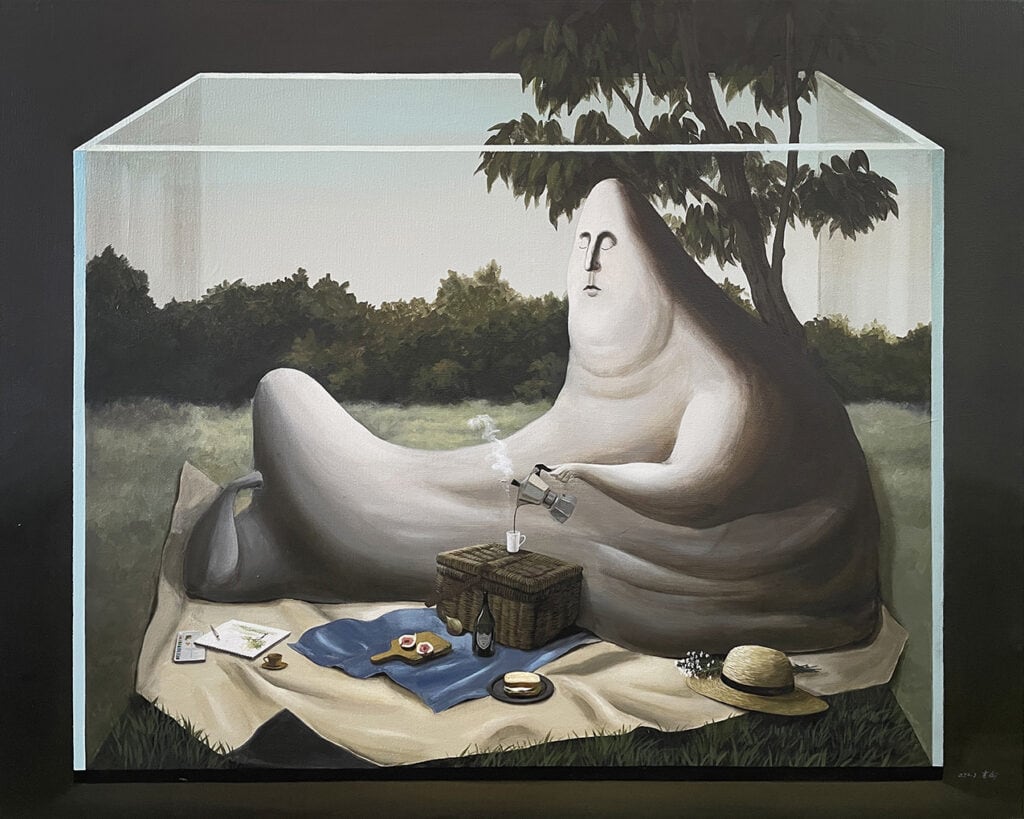
郭書瑜_做夢時間_壓克力、畫布_72.5x91cm_2023
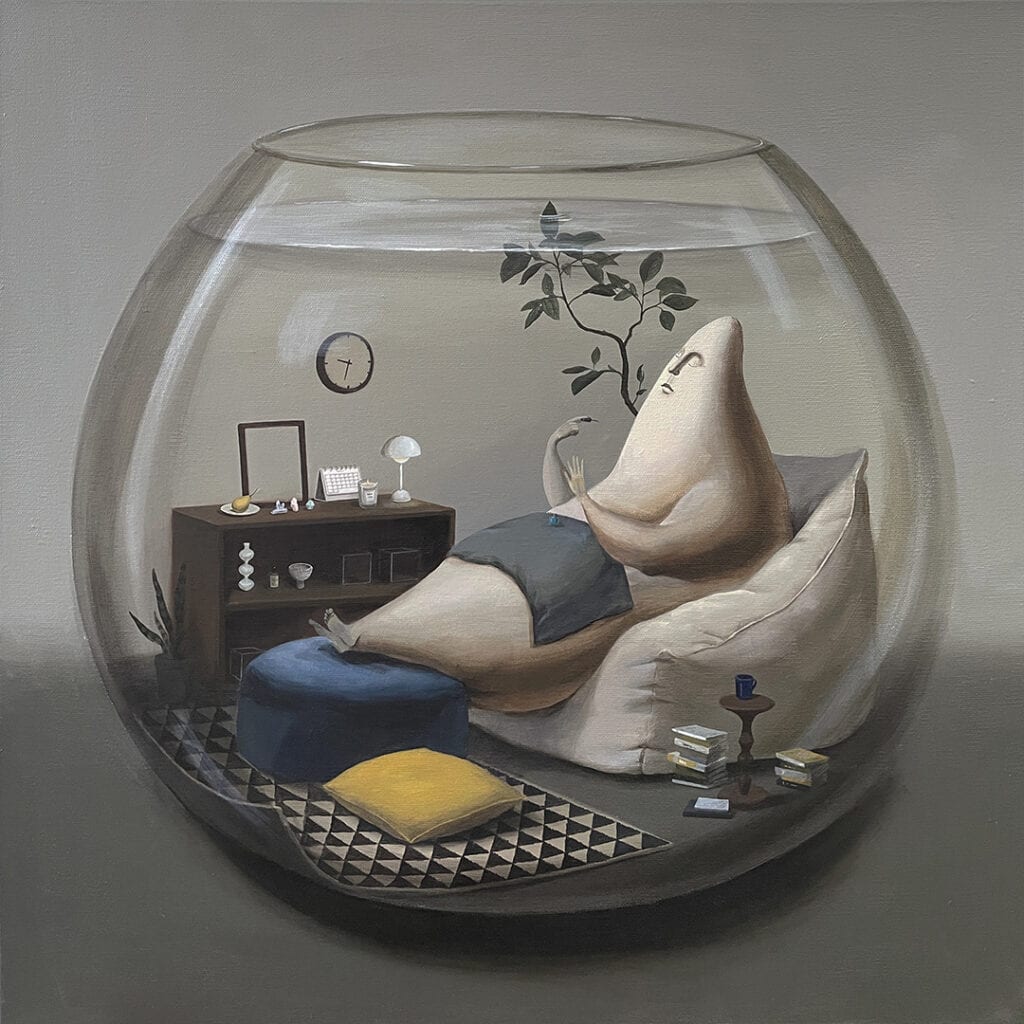
郭書瑜_看起來毫不費力_壓克力、畫布_70x70cm_2023
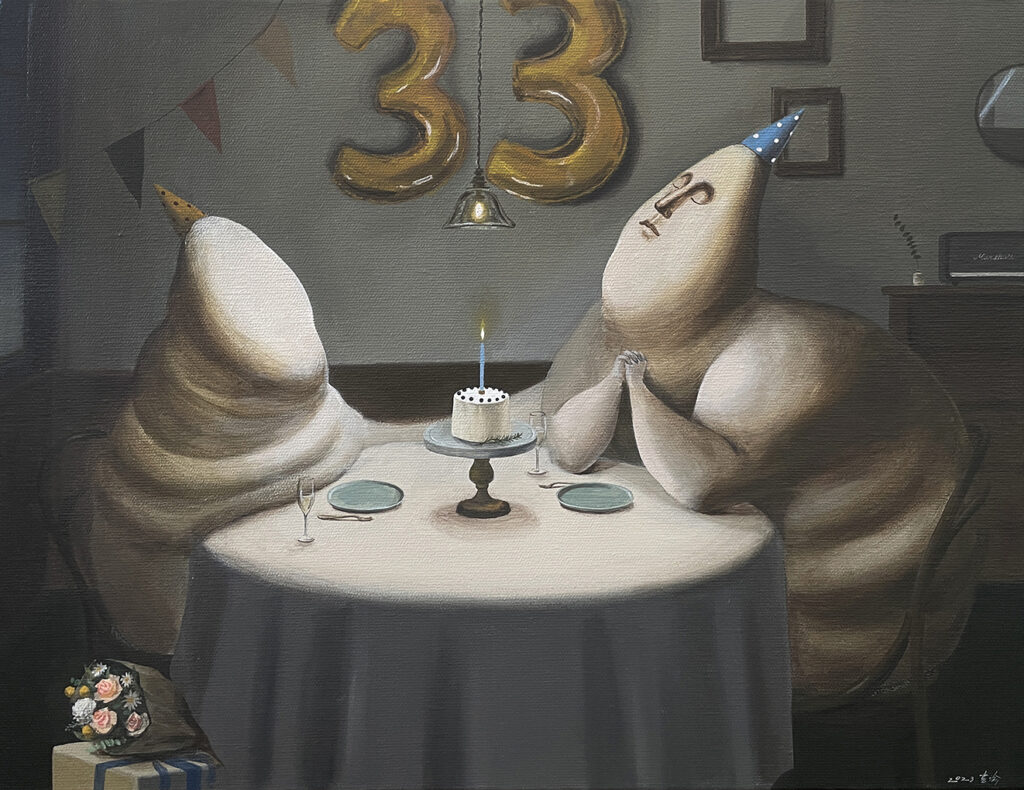
郭書瑜_我有你就夠了_壓克力、畫布_41x53cm_2023
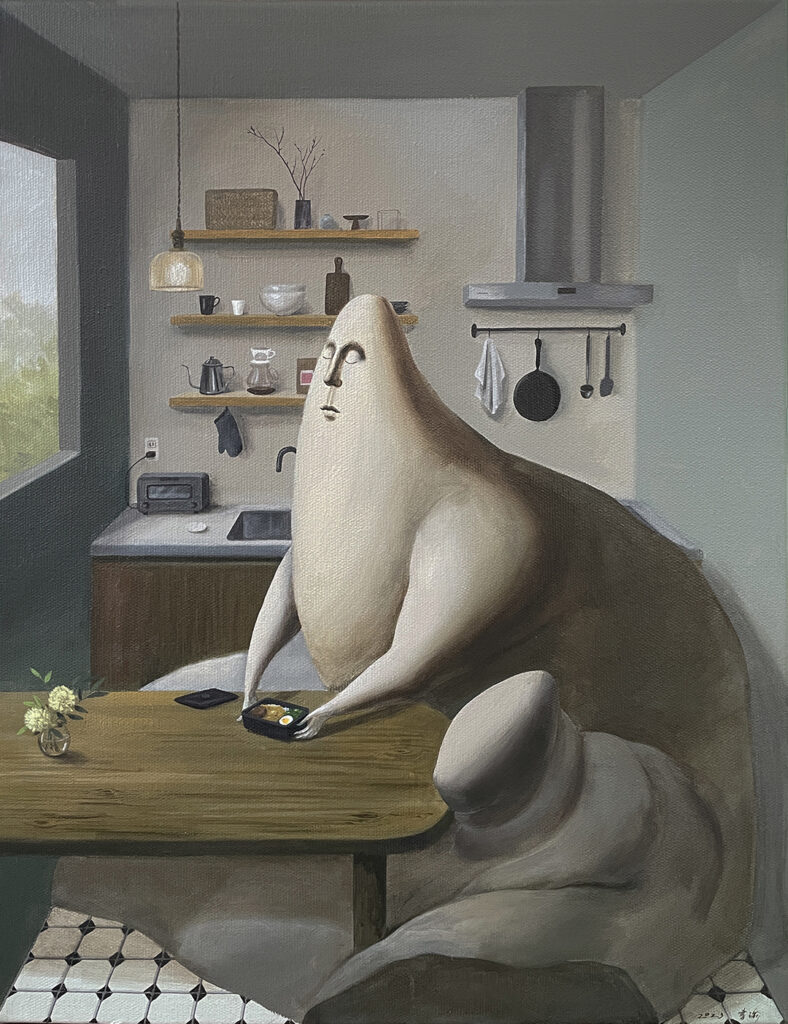
郭書瑜_理想場景_壓克力、畫布_53x41cm_2023
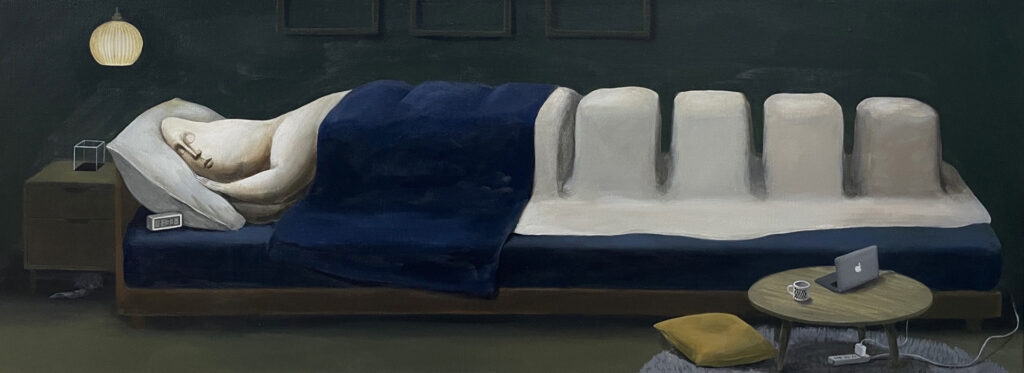
郭書瑜_睡前的準備_壓克力、畫布_30x80cm_2023

郭書瑜_期待,但不要太多_壓克力、畫布 _45.5x33cm_2023

郭書瑜_我做得到_壓克力、畫布_80x30cm_2023
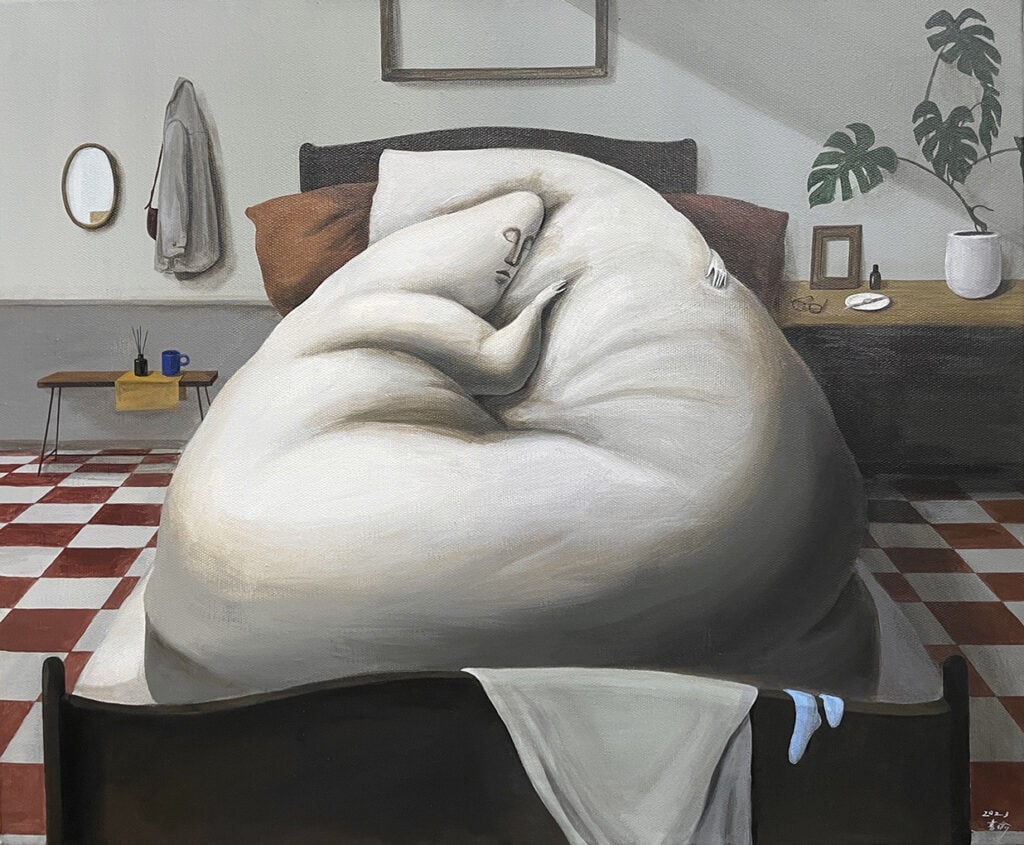
郭書瑜_讓我再睡一下_壓克力、畫布_50x60.5cm_2023
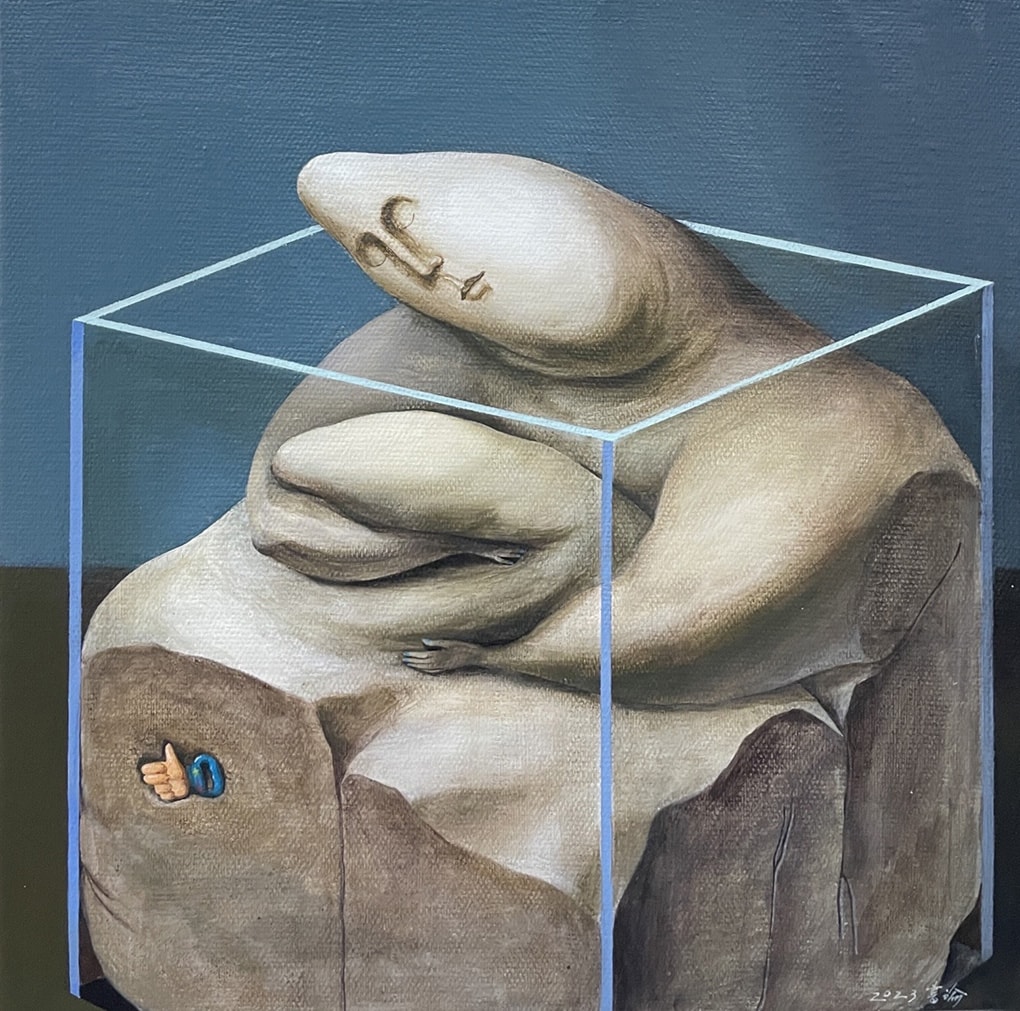
郭書瑜_我們_壓克力、畫布_30x30cm_2023
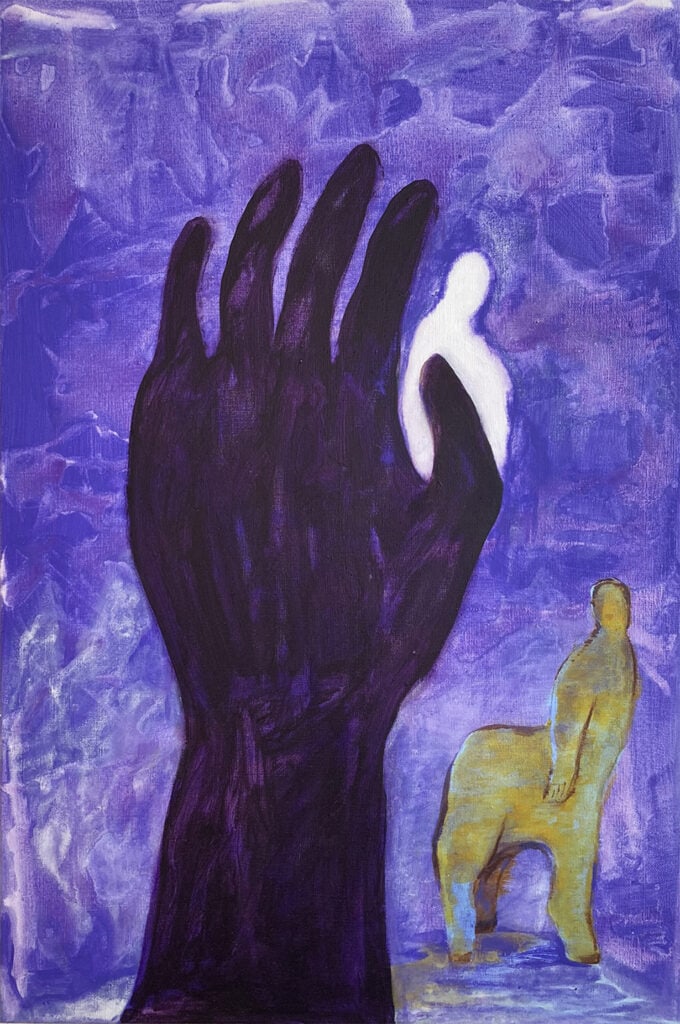
戴伶育_默劇II_壓克力、畫布_90×60cm_2023
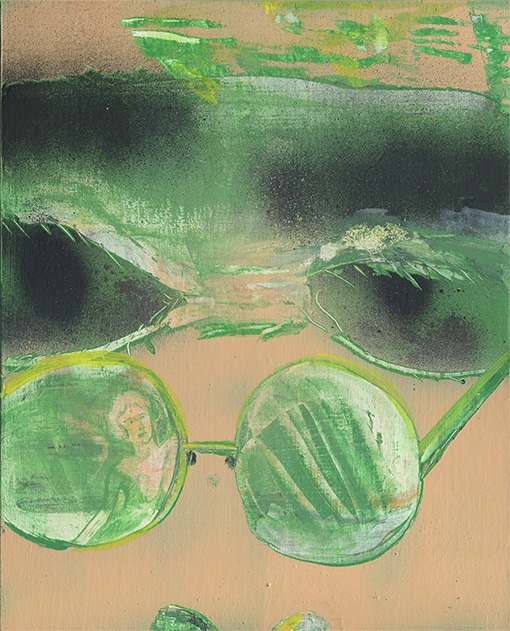
戴伶育_汗_壓克力、畫布_37×30cm_2023
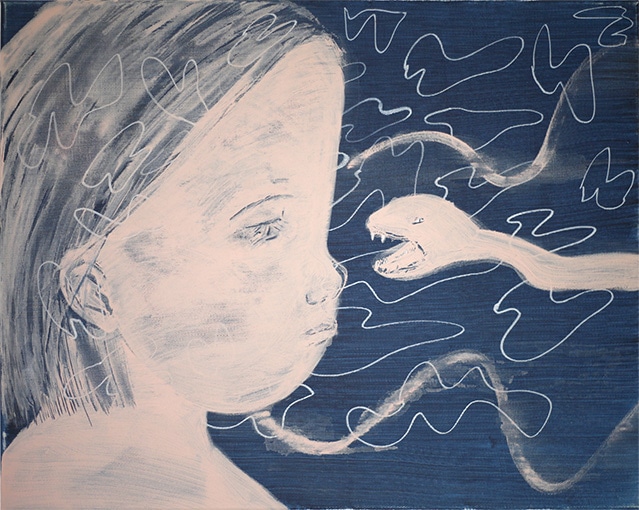
戴伶育_日夢_壓克力、畫布_39x50cm_2023
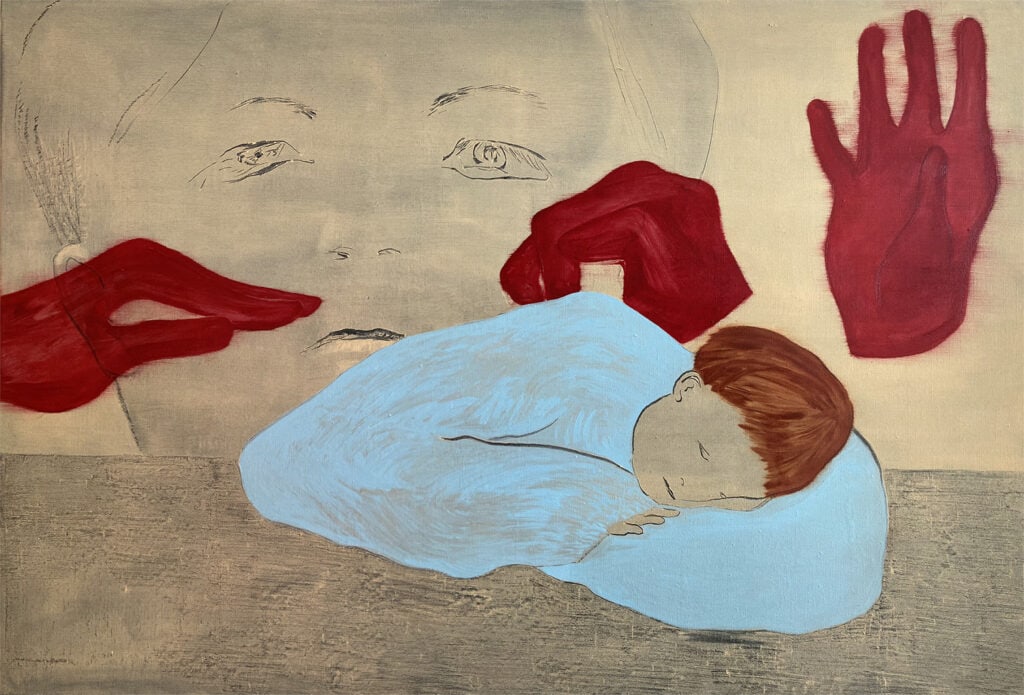
戴伶育_默劇_油彩、畫布_100×140cm_2023
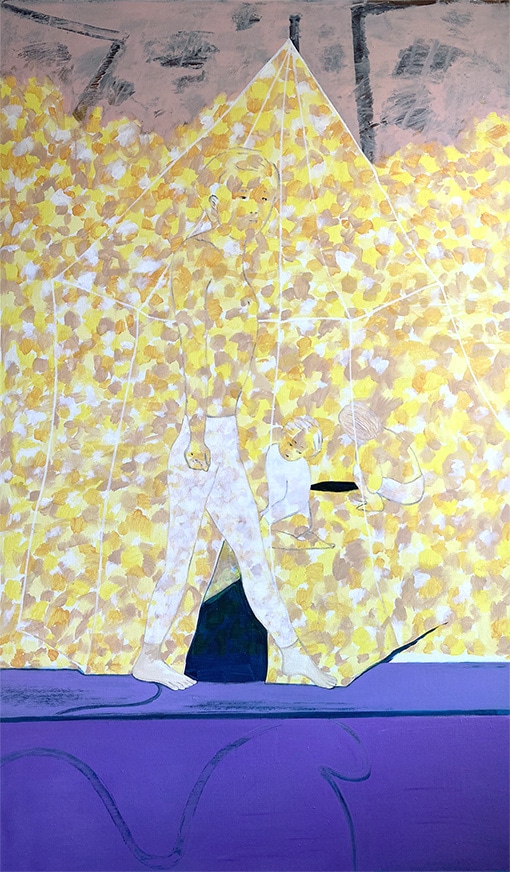
戴伶育_關係Ⅳ_壓克力、畫布_170×100cm_2023
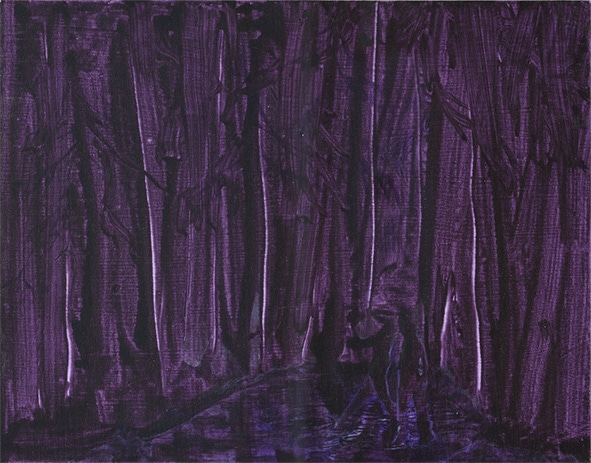
戴伶育_夜間冒險_壓克力、畫布_20x25cm_2023
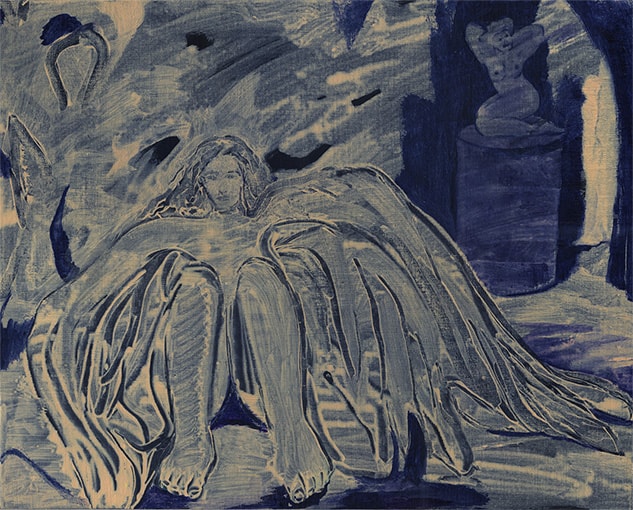
戴伶育_魔力三角_壓克力、畫布_30x37cm_2023
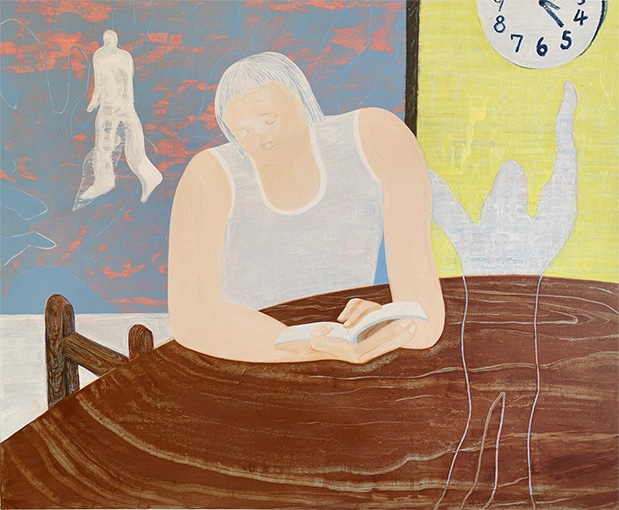
戴伶育_等待_油彩、壓克力、畫布_110×135cm_2023 拷貝
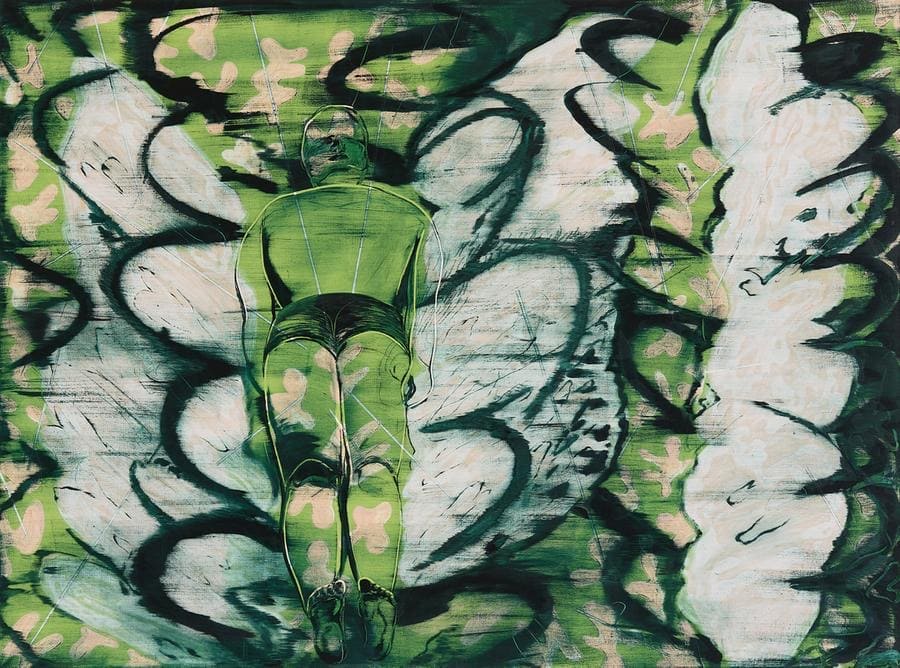
戴伶育_凌晨三點_油彩、壓克力、畫布 _139×190m_2022
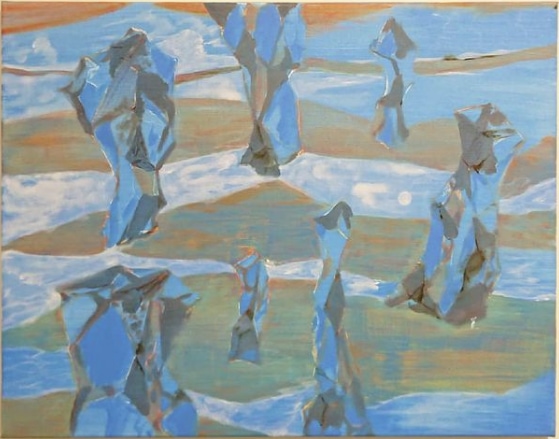
戴伶育_石海岸邊Ⅱ_壓克力、畫布_50×65cm_2021
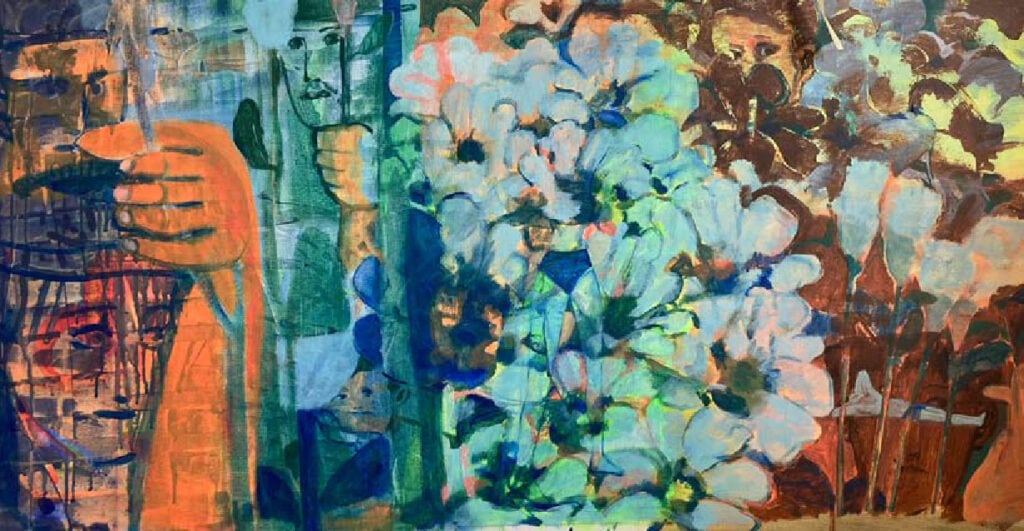
戴伶育_反花_壓克力、畫布_51x100cm_2023
Exhibition Title | Life is More Romantic than Dreams
Location | San Gallery (No. 186, Section 2, Zhongyi Road, West Central District, Tainan)
Participating Artists | Dai Lingyu, Guo Shuyu, Zhu Manzhen
Exhibition Dates | January 12, 2024 (Fri) – February 24, 2024 (Sat)
Opening Tea Party and Artist Tour | January 12, 2024 (Fri) 3:00 PM

